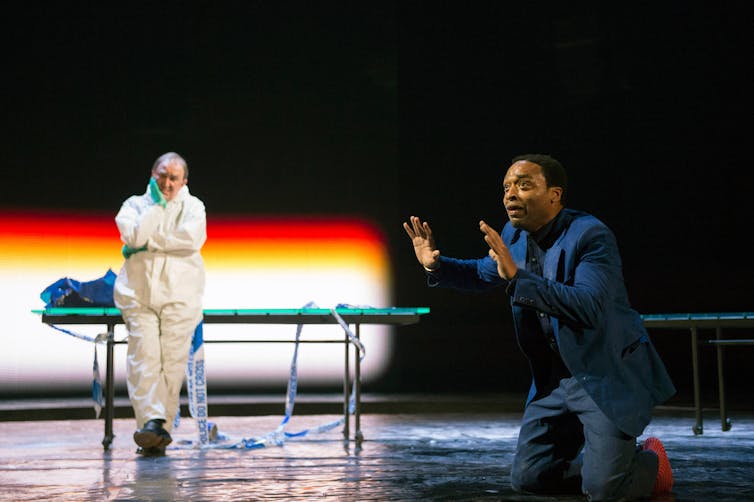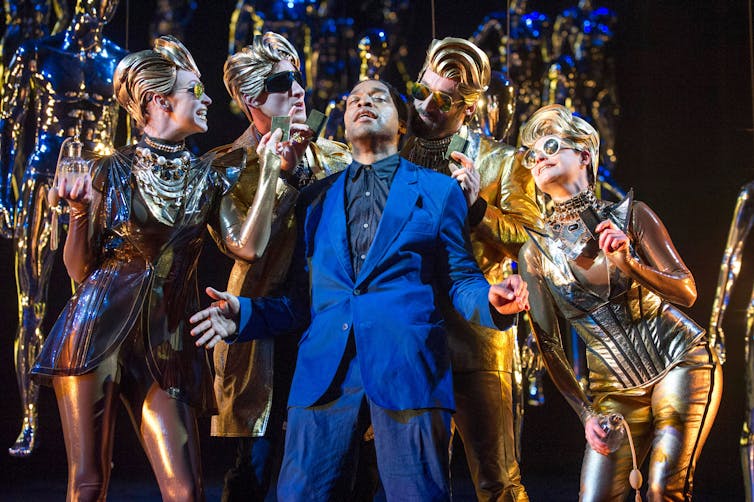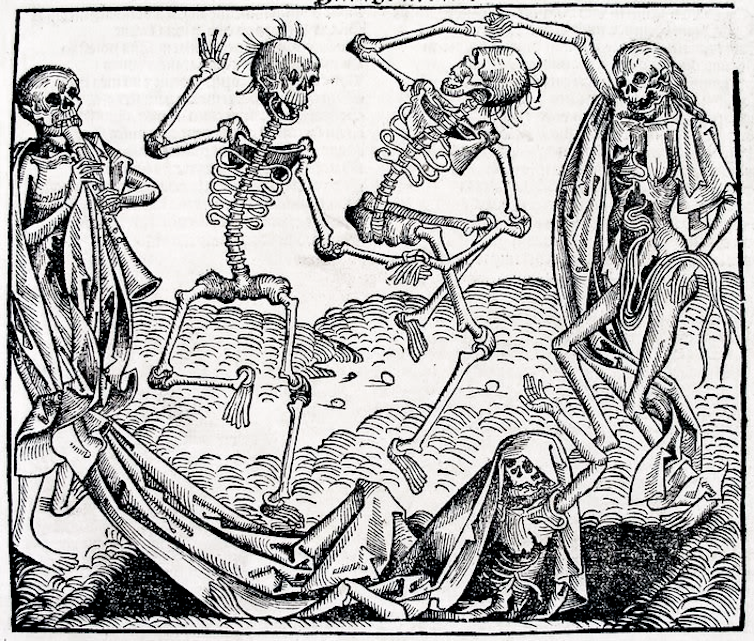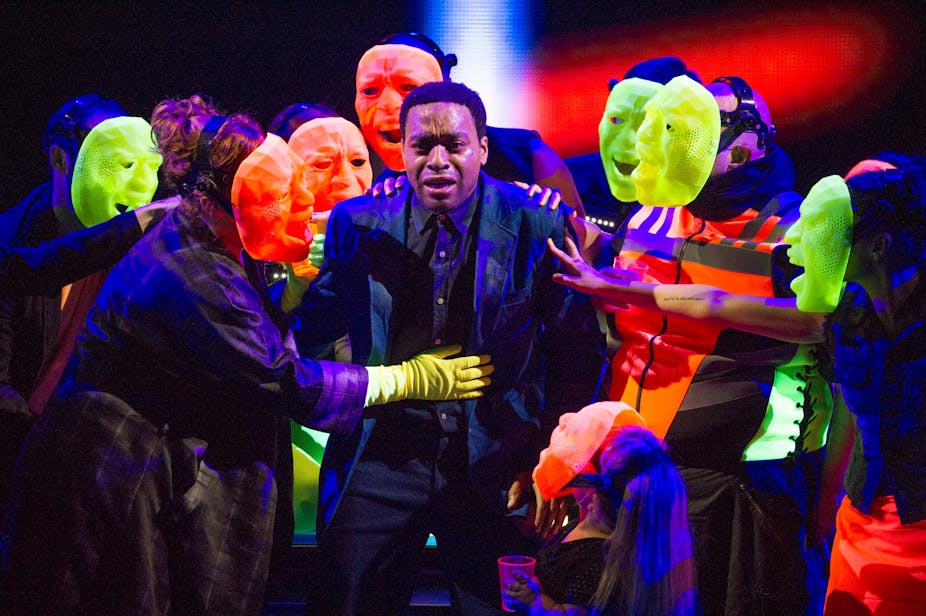I think it’s safe to say that the word “morality” doesn’t exactly call to mind the most enticing entertainment. Yet a morality play has just opened at London’s National Theatre with Chiwetel Ejiofor, star of 12 Years a Slave, in the title role. The label doesn’t lie – the purpose of this pre-Shakespearean drama is indeed moral instruction. We’re supposed to leave having learnt something for the good of our soul.
This isn’t exactly the aim of much entertainment these days – or if it is, films and TV programmes tend not to proclaim their purpose to be moral. But I was lucky enough to see an early preview of this production, a new and thought-provoking version of the medieval play Everyman adapted by Carol Ann Duffy. It might not sound it, but Everyman is gripping – and gravely humorous – stuff.
Everyman turns out to be our allegorical representative and hero, performed passionately (and compassionately) by Ejiofor. Unhappy at being forgotten by humanity, God sends Death to require Everyman to make a reckoning of his life, a journey from which there is neither escape nor return. We follow his unexpected and unwanted journey to meet his maker.

His final destination will be either heaven via purgatory, or hell. Where he ends up will be determined by the state of his “book of accounts”, but, unfortunately, Everyman’s ledger is empty of good deeds and replete with bad. So in the short time left to him, Everyman must rectify this with the help of the allegorical personifications he meets along the way.
In Everyman, the hour of our death – and our fitness to meet it – are thrust fully and unapologetically in our faces.
Medieval fun
Medieval audiences were presented with many opportunities to experience theatre. Medieval drama existed in a variety of forms, but the original authors remain unknown. Processions, mummers plays (those featuring St George), minstrels and Morris dancers enlivened city streets.
In May and June, York, Chester, Coventry and other cities put on cycle plays that dramatised biblical narratives from Creation to Doomsday. Audiences could watch saints’ lives, plays about the cult hero Robin Hood, and morality plays such as Mankind, The Castle of Perseverance and Everyman in which good and evil battle it out for the hero’s soul.
In the homes of the wealthy, interludes (short plays) were performed at banquets. Long before Shakespeare, medieval drama had got its act together, using market squares, city streets, churches and the homes of the wealthy for performance spaces. But medieval playtime was, at the end of the day, educational – and its lesson was how to lead a good Christian life.

The dance of death
Being confronted by a figure facing the hour of his death, members of the audience are forced to consider their own “ledger”, their own chances of getting into heaven. The attitudes to death in this medieval play may strike us as odd because medieval and 21st-century approaches to death could not be more different. In the middle ages, death was very visible. Today it is less so, viewed in a sterilised manner, safely tucked away behind TV screen or newspaper article. Dead bodies are hidden from sight as quickly as possible. Death, it seems, has become less real.
But in medieval times death was constantly present, always close at hand. Many Middle English lyrics were devoted to the three “sorrowful things” that haunted humanity: the inevitability of death, the uncertainty of when it will happen and the unknowability of where the soul will go post mortem.

This was also reflected in The Dance of Death, a pictorial allegory that showed Death leading kings, high-born ladies and others, all in the prime of their lives, in a dance to the grave. It was constantly drummed into people that wealth, youth and social status are no protection against Death’s dart.
Instruction in how to make a good death was widely available in the [Ars Moriendi](http://upload.wikimedia.org/wikipedia/commons/1/14/Ars_moriendi%28Meister_E.S.%29%2C_L.175.png)_ (art of dying) literature, whose woodcuts illustrated how to behave, and not to behave, at the hour of one’s demise. Apparently calm acceptance of physical suffering, focusing on Christ and the eternal life to come, were crucial to achieving a good medieval death and ensuring a chance for entry to purgatory, and then, eventually, to heaven (unless you were one of the saintly few who went straight there).
Hiding death
Today, we are rarely instructed in how to behave at the moment of our death. We do not have The Dance of Death to remind us of its inevitability. We remain healthy and well for much longer than our medieval counterparts, so our contemplation of death is deferred. The actual hour of our death – while still inevitable and unknown – can be postponed by the intervention of modern medicine. Medieval apprehension about the fate of the soul has been replaced, for many, by anxiety for the body in its final stages – will we be physically or mentally incapacitated, in pain, cared for by loved ones at home or institutionalised?

Unlike our medieval counterparts, we seek to avoid pain and suffering in our last moments rather than embracing it as a means of securing a better place in eternity – that is, if we subscribe to a belief in an afterlife at all.
The figure Everyman has forgotten the causal relationship between behaviour in this life and its impact on the next. He prefers to spend his life with “Fellowship”, eating, drinking, chasing women, or, as in Duffy’s adaptation, clubbing and indulging in synchronised coke snorting. And while many of us may not believe in the next life, this allegory has the power to remind us that life and wealth are both ephemeral, and can be taken away at any moment.
A chasm exists between the medieval and modern understanding of death – and Everyman provides an opportunity to bridge this gap, even if just for the 100-minute production.

